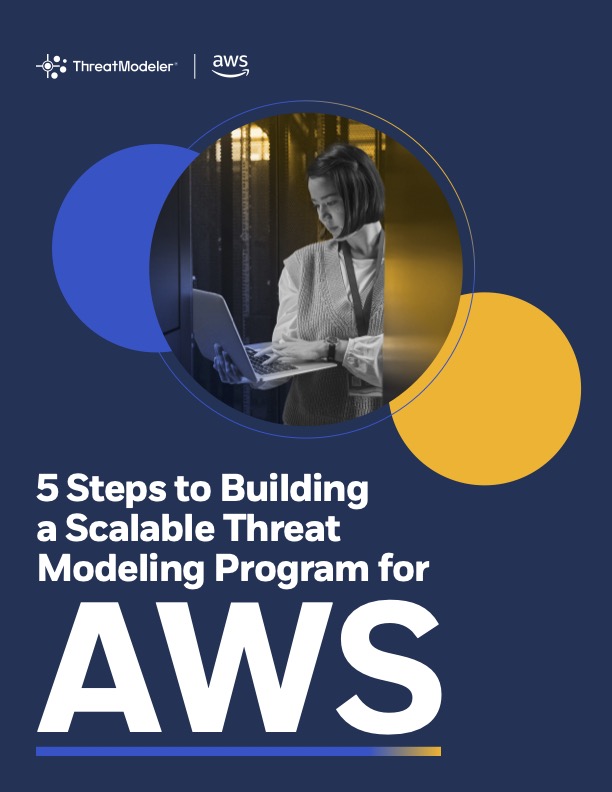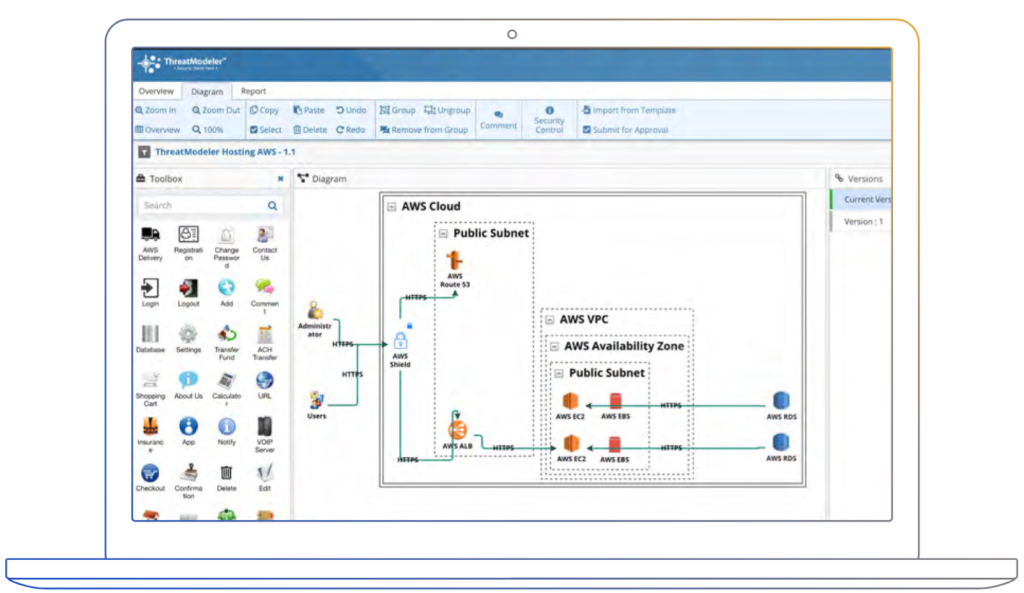Download the
WHITE PAPER
5 Steps to Building a Sustainable Threat Modeling Program for AWS
Threat Modeling has built a strong position in the cybersecurity industry as a well-known practice providing a deeper understanding of the various threats and an overall attack surface. By applying threat modeling to a cloud environment, organizations can understand their cloud architecture, the relevant threats and the overall attack surface. This enables, security teams to better understand the controls required to mitigate these threats and manage their overall risk exposure.
This white paper will highlight the most important steps for building a threat model for a cloud environment and establishing a scalable threat modeling process.
Read the full white paper below or download it now.

Amazon is the major player on the cloud market, establishing a secure cloud services platform – Amazon Web Services (AWS) — that offers compute power, database storage, content delivery and other features. Other key cloud computing platforms in the game are Azure, considered the second dominant player, followed by Google, Oracle and few others.
Although many organizations are making use of these platforms, they are still hesitant to move to cloud services without being aware of the security concerns. The Cloud Security Spotlight Report revealed that “90% of organizations are very or moderately concerned about public cloud security”.
Some of the main security concerns in a cloud are: reduced visibility and control, lack of understanding of shared responsibility, lack of tools and technologies and lack of knowledge or SME. With all these mega breaches, the security of data in the cloud is a concern at 61% of companies.
Threat Modeling as a Preventive Approach
Threat Modeling has built a strong position in the cybersecurity industry as a well-known practice providing a deeper understanding of the various threats and an overall attack surface. By applying threat modeling to a cloud environment, organizations can understand their cloud architecture, the relevant threats and the overall attack surface. This enables, security teams to better understand the controls required to mitigate these threats and manage their overall risk exposure.
This white paper will highlight the most important steps for building a threat model for a cloud environment and establishing a scalable threat modeling process. Some of the most valuable key points discussed are:
Threat modeling enables organizations to:
-

Promotion of secure coding, requiring organization standards.
-

Creation of task lists to ensure that security controls meet compliance objectives.
-

Implementation of threat modeling as a self-service model by leveraging workflow integration.
-

Leverage security tools and technologies to reduce
attack surface.
Meeting today’s security challenges as well as being strategically positioned for tomorrow’s opportunities, makes cloud security a must-have rather than a nice-to-have. Whether organizations are considering deploying a single application to the cloud, migrating their data or creating a complete serverless architecture, their cloud environment becomes a part of the organization’s comprehensive attack surface. Therefore, organizations have the urge of an automated and scalable threat modeling program to fully understand and effectively address the potential threats in a cloud native architecture.
Design the Cloud Architecture
Threat models can also be built automatically from the existing workload in the AWS cloud ecosystem. ThreatModeler integrates with any type of AWS configuration, allowing users to build threat models for their cloud workload. This feature gives users access to continuously monitor threat models in real time.
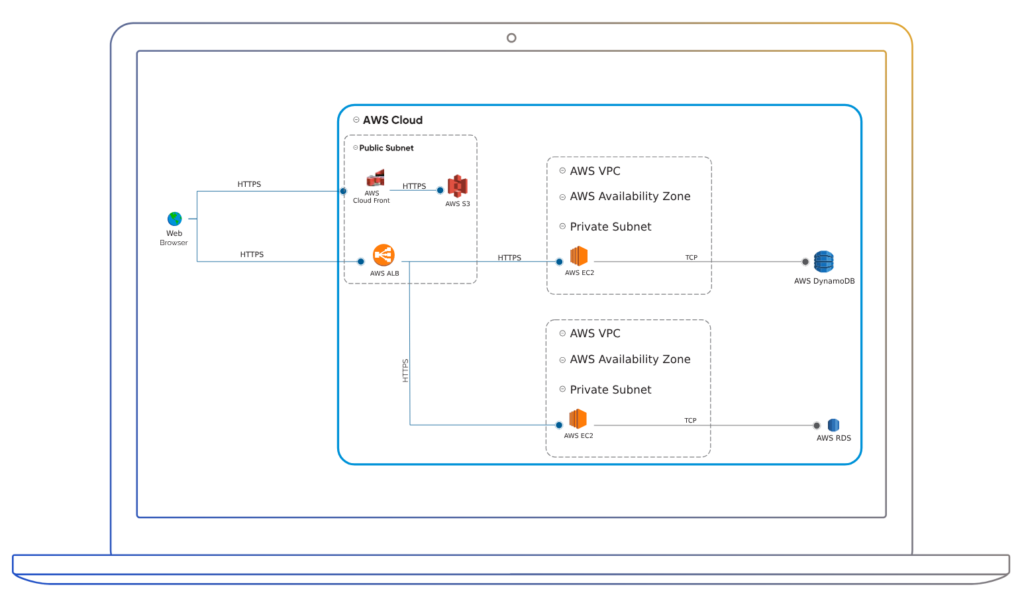
Identify the Threat
ThreatModeler offers a comprehensive library specific to AWS environments. This library includes the cloud top 12 & CAPEC threats. ThreatModeler’s cloud security framework is specially designed to deliver security requirements relevant to AWS workloads. Users are able to import custom security policies into library.
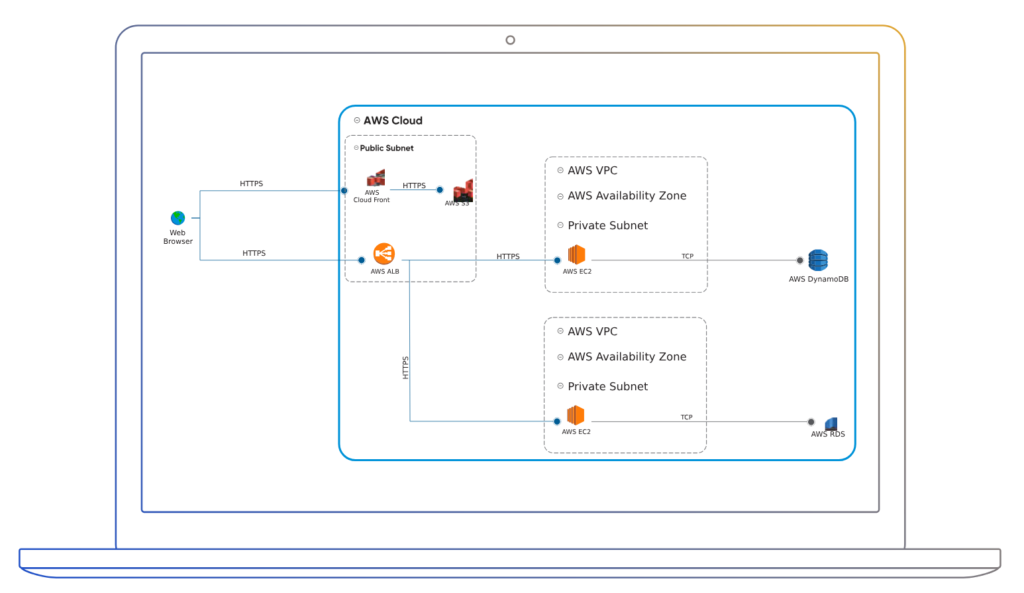
Implement the Security Controls
In the figure below, you can use AWS security groups, AWS Shield or IAM roles to protect various resources. It is also possible to define threats mitigated by identifying security control in your threat modeling tool. The architecture below uses an AWS shield security control to protect the resources from DOS attack.
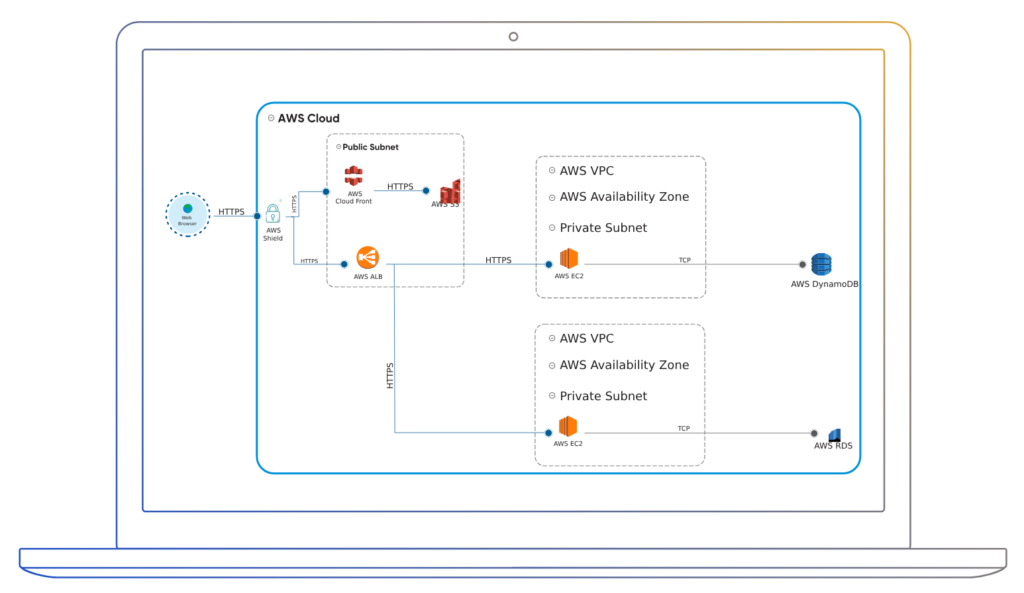
Example of AWS Security Controls
|
NAME |
DESCRIPTION |
|---|---|
| AWS Inspector | Amazon Inspector is an automated security assessment service that helps improve the security and compliance of applications deployed on AWS. Amazon Inspector automatically assesses applications for vulnerabilities or deviations from best practices. |
| AWS VPC Endpoint | Enables private connectivity to services hosted in AWS from within your VPC without an Internet connection. With this feature, there is no requirement for an Internet Gateway, VPN, Network Address Translation (NAT) devices, firewall proxies or attaching an EIP. |
| AWS WAF | AWS WAF is a web application firewall that helps protect your web applications from common web exploits that could affect application availability, compromise security, or consume excessive resources. |
| AWS Shield | AWS Shield is a managed Distributed Denial of Service (DDoS) protection service that safeguards applications running on AWS from common, most frequently occurring, network and transport layer DDoS attacks. |
| AWS KMS | AWS Key Management Service (KMS) is a managed service that makes it easy for you to create and control the encryption keys used to encrypt your data and uses FIPS 140-2 validated hardware security modules to protect the security of your keys. |
| AWS Security Groups | AWS security groups (SGs) are associated with Ec2 instances and provide security at the protocol and port access level. Each security group – working much the same way as a firewall – contains a set of rules that filter traffic coming into and out of an EC2 instance. |
| AWS IAM |
Describes the AWS CLI commands that you can use to administer IAM. Provides syntax, options, and usage examples for each command. |
Validate the Correct Implementation of Security Controls
Users can validate security controls by logging into their AWS cloud system and make surreal controls are implemented. ThreatModeler Cloud Edition includes a new feature that continuously monitors threat models, allowing users to
certify the controls are implemented and they can be aware of any changes and updates. Users can review those changes and incorporate them to a new version of their current threat model.
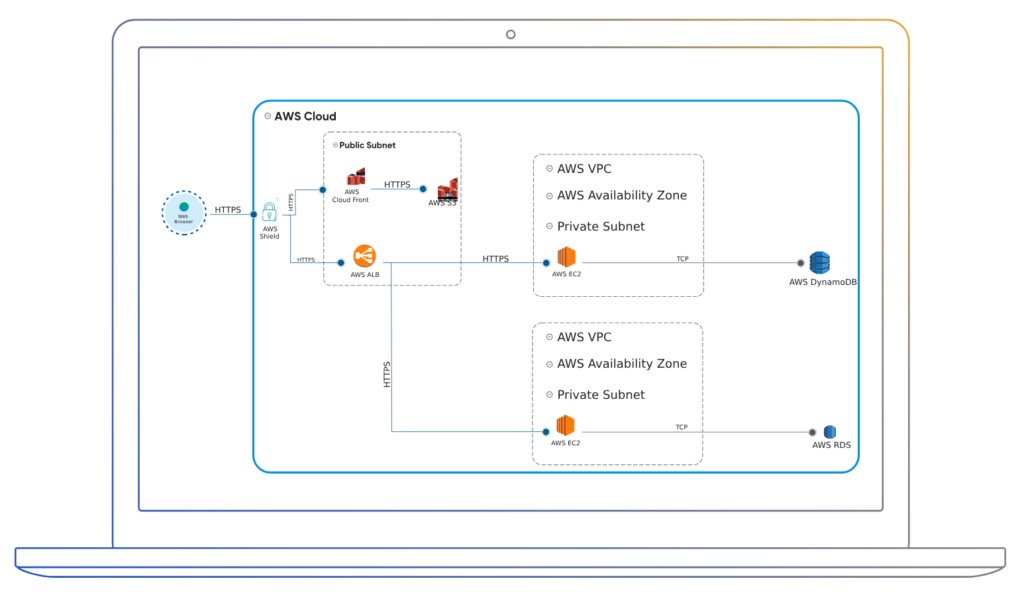
Monitor the Changes to the Cloud Architecture
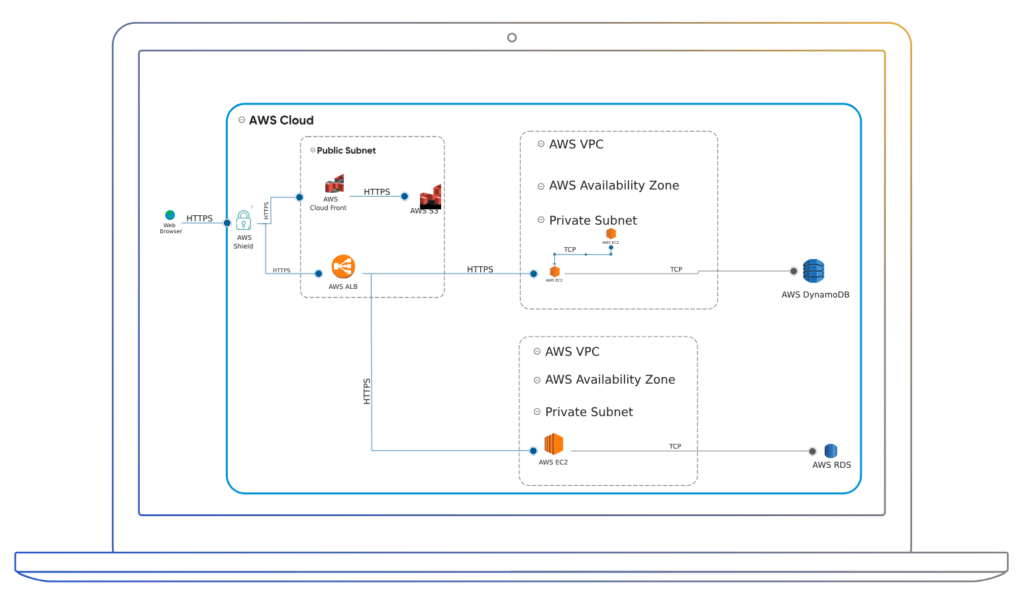
ThreatModeler Cloud Edition for AWS
As organizations recognize the importance of cloud computing, the need for a threat modeling tool forthe cloud becomes a requirement. Most of the threat modeling practices today are using manual cloudenvironments. Unfortunately, manual processes are outdated, involving higher costs and lack of accuracy.
ThreatModeler – an official AWS Technology partner – provides an automated, structured approach tobuild secure cloud environments. This cloud platform threat modeling solution allows organizations tobuild threat models from pre-defined templates of various AWS architectures or even create a threat modelusing a wizard plugin in just a couple of minutes.
Organizations can scale their threat modeling process across their entire DevOps portfolio, regardlessof whether the initiatives are in-house or deployed within their AWS environment. The outputs generatedby ThreatModeler are consistent, concrete, and actionable – allowing organizations to generate acomprehensive attack surface analysis of their entire IT footprint – whether in-house or on the AWS andAzure platform – along with the relevant mitigating controls.
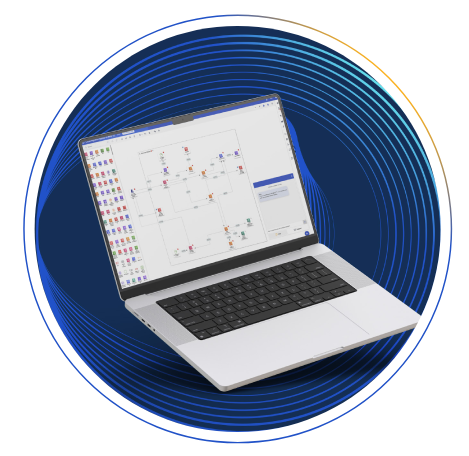
ThreatModeler Cloud Edition for AWS includes the following exclusive features and benefits:
-

Create threat models automatically for AWS
Continuous threat models and concurrent users for comprehensive coverage across your entire application and infrastructure portfolio to foster widespread adoption.
-

Cloud-Native Security Framework
ThreatModeler™ provides a comprehensive toolbox with specific security controls that apply to the AWS environment. This feature saves time and effort to organizations when creating their own
security controls. -

Continuous Monitoring
ThreatModeler continuously monitors threat models, intelligently notifying users of updates and changes.
-

Reusable Templates
ThreatModeler allows organizations to build threat models related to their AWS environment in minutes and immediately receive the actionable output needed for secure, rapid-deployment decisions. Users are able to use pre-built templates
to customize threat models for AWS infrastructures. -

Integration with CICD pipeline
ThreatModeler’s bi-directional API gives users the ability to leverage their existing investments in technologies such as JIRA & Jenkins – if it’s part of their DevOps and CI/CD toolchain, they would want it to be
part of their threat modeling process.
